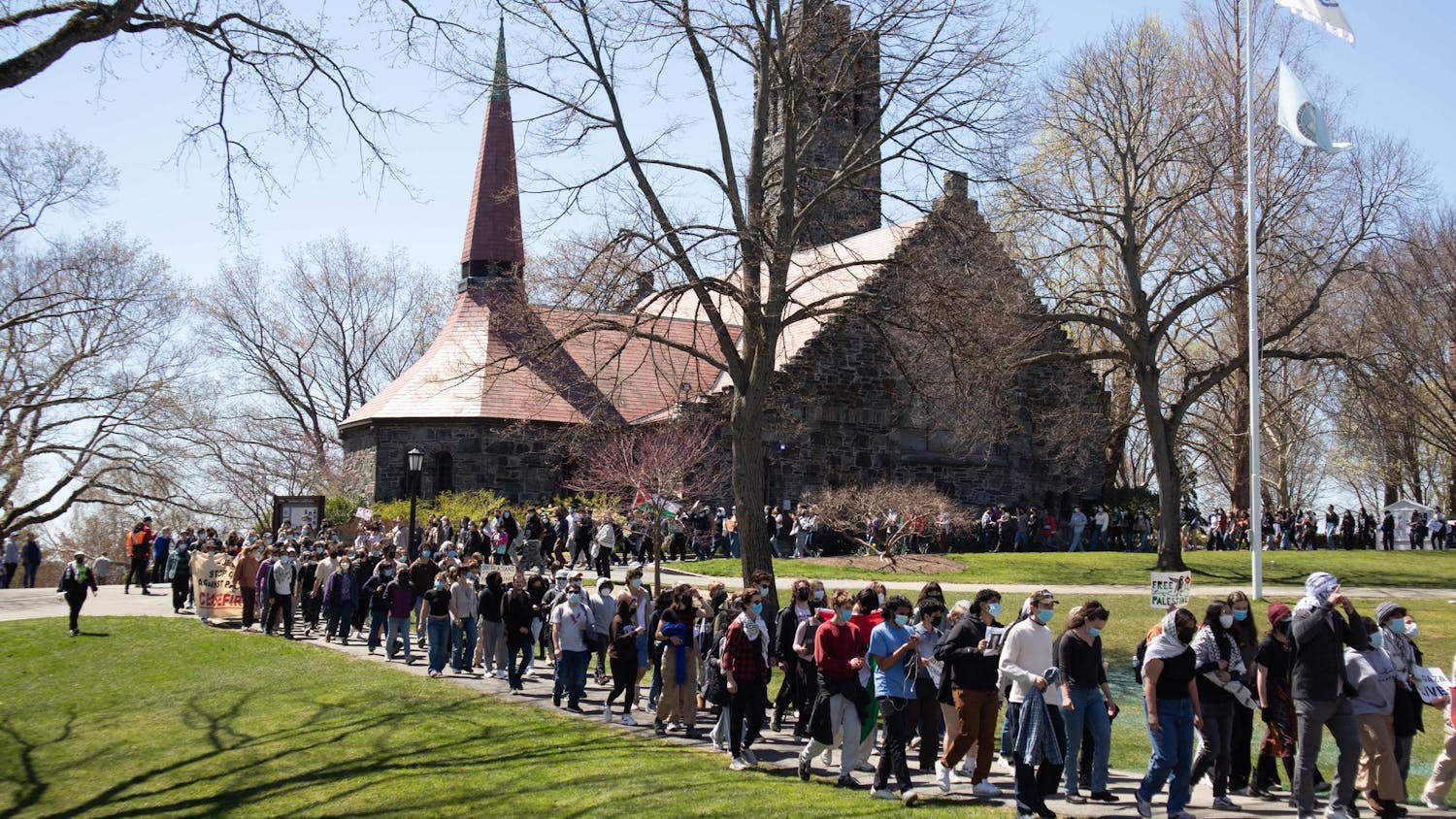Founder of Higher Ground Farm John Stoddard (N '09) spoke yesterday in the Lincoln Filene Center Rabb Room about the environmental benefits of rooftop farming in the Environmental Studies Program's weekly Lunch and Learn series.
Director of the Environmental Studies Program Colin Orians introduced Stoddard, who received his master's degree from the Friedman School of Nutrition Science and Policy's Agriculture, Food and the Environment program. The region's first farm, Stoddard's organization recently completed its first year of planting.
According to Stoddard, Higher Ground Farm is located at the Boston Design Center in the city's Seaport District. The four-acre building, which once served as an army supply base, was ideal for a rooftop farm because of its strong, fortress-like structure.
Stoddard explained that he founded the farm with one of his undergraduate classmates, Courtney Hennessey, who has experience in farming. In addition, he works with hospitals to encourage them to purchase local foods.
"It really resonated with me, that kind of work," he said. "I always loved food, cooking, gardening, et cetera. The two of them [food and advocacy] together really made sense."
Stoddard later described the components of a rooftop farm. Above the roofing membrane, farmers must install a root barrier to protect the roof, insulation and a drainage board. Plants are placed in a light-weight "growing medium" soil mixture with little organic matter, as normal soil is often too heavy for roofs to support. This is one of several differences from ground-level cultivation that rooftop farmers must keep in mind.
"You're not connected to the earth," Stoddard said. "That's important when you think about nutrients and soil. You're not going to have things replenished like they would at ground level."
Other concerns specific to rooftop farms include finding efficient ways to transport materials from the ground to the roof and working in windy conditions. Seagulls, too, can pose problems, according to Stoddard.
"Seagulls can be very aggressive," he said. "They're very protective of their nests."
While rooftop farms have their challenges, they also provide unique benefits, Stoddard said. Farm environments create cooler atmospheres than normal concrete roofs and can help building owners save energy.
"The [air conditioning is] not working as hard. You're using less energy, and you're paying less money for energy," Stoddard said.
Rooftop farms offer fire hazard and noise reduction, and can even extend the functional life of relatively new roofs by two or three times their normal length, according to Stoddard.
"When we approach people, a lot of people say 'Are you going to wreck our roof?'" he said. "On the contrary, we protect your roof."
Most importantly, the roof farms allow people to utilize unused space to grow food and offer urban locals the opportunity to experience farming.
"We know first hand that people really want to connect to food and green space," Stoddard said. "We had two volunteer days [at Higher Ground Farm] with spaces for 25 people, and we had 50 people sign up for each day."
While creating and buying materials for Higher Ground Farm, Stoddard and Hennessey were careful to be conscious of sustainability issues, he said. Eventually, they hope to become a carbon neutral organization.
One question that customers periodically have is whether air pollution affects produce from rooftop farms, Stoddard said. While not a lot of research exists on the topic, one study from a Cornell University affiliate indicates that, unless farms are situated close to idling traffic, air pollution does not greatly impact the plants.
"Nutritional value of vegetables was not as good as an organic ground level farm, but better than [U.S. Department of Agriculture] averages," Stoddard said.
Stoddard also described in detail the farm installation process: searching for the right roof, securing a lease, raising money and consulting structural engineers.
"It was like nothing [Hennessey] or I have ever done," he said. "It was just a huge, huge project."
Stoddard was able to team up with 14 different restaurants and retailers to distribute the farm's produce, which included seven varieties of tomatoes, herbs such as basil, cilantro and parsley, as well as greens like spinach and kale.
In the future, Stoddard hopes to further diversify the farm's products and network with other farms. He is hopeful that his organization will help create an environmental movement of rooftop farms.
"On a large scale, it could actually make a dent on common urban environmental problems," he said.






